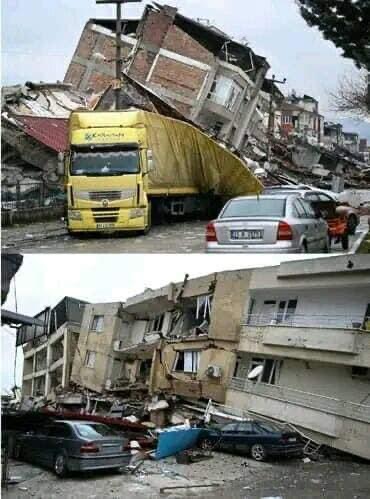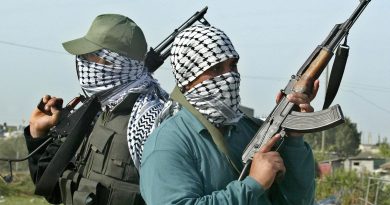Ghanaian Ex-International, Christian Atsu, Trapped In A Rubble As 2,300 People Confirmed Dead In Turkey,Syria 7.8 Magnitude Earthquake
2,300 People Confirmed Dead As Two Large Earthquakes Hit Turkey, Syria Turkish authorities confirmed the death of 1,541 persons with over 810 reported in Syria, after powerful earthquakes brought thousands of buildings down in both countries.
A powerful, 7.8 magnitude earthquake rocked wide swaths of Turkey and neighboring Syria on Monday, killing more than 2,300 people and injuring thousands more as it toppled hundreds of buildings and trapped residents under mounds of rubble or pancaked floors.
Authorities feared the death toll would rise further as rescuers searched through tangles of metal and concrete for survivors in a region beset by more than a decade of Syria’s civil war and a refugee crisis.
Residents jolted out of sleep by the pre-dawn quake rushed outside in the rain and snow to escape falling debris, while those who were trapped cried for help. Major aftershocks, including one nearly as strong as the initial quake, continued to rattle the region.
“I don’t have the strength anymore,” one survivor could be heard calling out from beneath the rubble in the Turkish city of Adana, as rescue workers tried to reach him, said a resident, journalism student Muhammet Fatih Yavuz. He said three buildings near his home were toppled.
The quake, which was centered on Turkey’s southeastern province of Kahramanmaras, sent residents of Damascus rushing into the street and was felt as far away as Cairo and Beirut.
“Because the debris removal efforts are continuing in many buildings in the earthquake zone, we do not know how high the number of dead and injured will rise,” Turkish President Recep Tayyip Erdogan said.
The quake piled more misery on a region that has seen tremendous suffering over the past decade. On the Syrian side, the area affected is divided between government-held territory and the country’s last opposition-held enclave, which is surrounded by Russian-backed government forces. Turkey, meanwhile, is home to millions of refugees from the civil war.
In the rebel-held enclave, hundreds of families remained trapped in rubble, the opposition emergency organization, called the White Helmets, said in a statement. The area is packed with some 4 million people displaced from other parts of the country by the war. Many of them live in buildings that are already wrecked from past bombardments.
Strained health facilities and hospitals quickly filled with injured, rescue workers said. Others had to be emptied, including a maternity hospital, according to the SAMS medical organization.
The region sits on top of major fault lines and is frequently shaken by earthquakes. Some 18,000 were killed in similarly powerful earthquakes that hit northwest Turkey in 1999.
The U.S. Geological Survey measured Monday’s pre-dawn quake at 7.8, with a depth of 18 kilometers (11 miles). Hours later, a 7.5 magnitude one struck more than 100 kilometers (60 miles) away.
The second jolt in the afternoon caused a multistory apartment to topple face-forward onto the street in the Turkish city of Sanliurfa, smashing into rubble and raising a cloud of dust as bystanders screamed, according to video of the scene.
Orhan Tatar, an official from Turkey’s disaster management agency, said it was a new earthquake, but Yaareb Altaweel, a seismologist with the USGS, said it was considered an aftershock because it took place on the same fault line as the first.
Thousands of buildings were reported collapsed in a wide area extending from Syria’s cities of Aleppo and Hama to Turkey’s Diyarbakir, more than 330 kilometers (200 miles) to the northeast. A hospital came down in the Mediterranean coastal city of Iskenderun, but casualties were not immediately known, Turkish Vice President Fuat Oktay said.
Such severe damage typically leads to a significant death toll, but bitterly cold temperatures could make matters even worse, reducing the timeframe that rescuers have to save trapped survivors, said Dr. Steven Godby, an expert in natural hazards at Nottingham Trent University. He added that the difficulty of working in areas beset by civil war would only complicate rescue efforts.
Televisions stations in Turkey aired screens split into four or five, showing live coverage from rescue efforts in the worst-hit provinces. In the city of Kahramanmaras, rescuers pulled two children alive from the rubble, and one could be seen lying on a stretcher on the snowy ground.
Offers of help — from search-and-rescue teams to medical supplies and money — poured in from dozens of countries, as well as the European Union and NATO. The vast majority were for Turkey, with Russian and even an Israeli promise of help to the Syrian government, but it was not clear if any would go to the devastated rebel-held pocket in the northwest.
In Turkey, people trying to leave the quake-stricken regions caused traffic jams, hampering efforts of emergency teams. Mosques around the region were opened to provide shelter for people unable to return to damaged homes amid temperatures that hovered around freezing.
In Diyarbakir, hundreds of rescue workers and civilians formed lines across a mountain of wreckage, passing down broken concrete pieces, household belongings and other debris as they searched for trapped survivors while excavators dug through the rubble below.
In northwest Syria, the quake added new woes to the opposition-held enclave centered on the province of Idlib, which has been under siege for years, with frequent Russian and government airstrikes. The territory depends on a flow of aid from nearby Turkey for everything from food to medical supplies.
The opposition’s Syrian Civil Defense described the situation there as “disastrous.”
At a hospital in Idlib, Osama Abdel Hamid said most of his neighbors died. He said their shared four-story building collapsed just as he, his wife and three children ran toward the exit. A wooden door fell on them and acted as a shield.
“God gave me a new lease on life,” he said.
In the small Syrian rebel-held town of Azmarin in the mountains by the Turkish border, the bodies of several dead children, wrapped in blankets, were brought to a hospital.
The Directorate-General of Antiquities and Museums in Syria said the earthquake has caused some damage to the Crusader-built Marqab, or Watchtower Castle, on a hill overlooking the Mediterranean. Part of a tower and parts of some walls collapsed.
In Turkey, meanwhile, the quake damaged a historic castle perched atop a hill in the center of the provincial capital of Gaziantep, about 33 kilometers (20 miles) from the epicenter. Parts of the fortresses’ walls and watch towers were leveled and other parts heavily damaged, images from the city showed.
More than 1,500 people were killed in 10 Turkish provinces, with some 9,700 injured, according to Turkish authorities. The death toll in government-held areas of Syria climbed to over 460 people, with some 1,300 injured, according to the Health Ministry. In the country’s rebel-held northwest, groups that operate there said the death toll was at least 380, with many hundreds injured.
Huseyin Yayman, a legislator from Turkey’s Hatay province, said several of his family members were stuck under the rubble of their collapsed homes.
“There are so many other people who are also trapped,” he told HaberTurk television by telephone. “There are so many buildings that have been damaged. People are on the streets. It’s raining, it’s winter.”
Meanwhile, Ghanaian ex-international, Christian Atsu is said to be trapped in the rubble.


AFP




